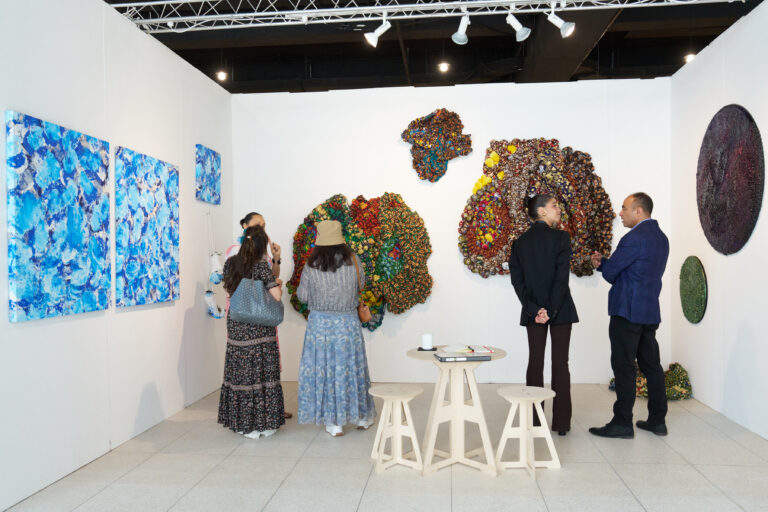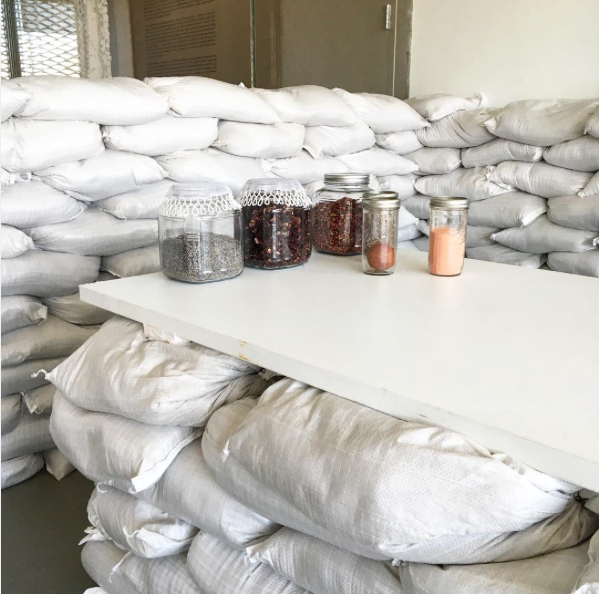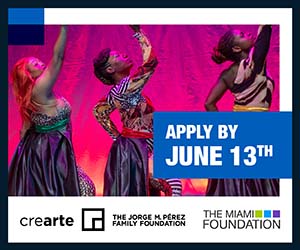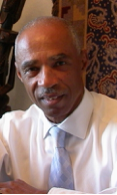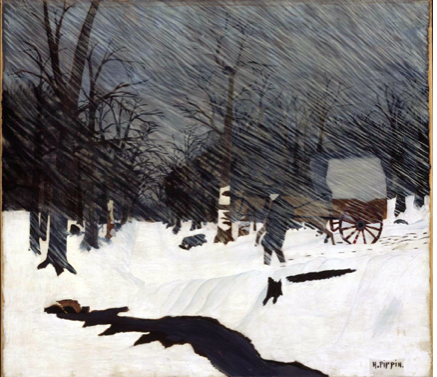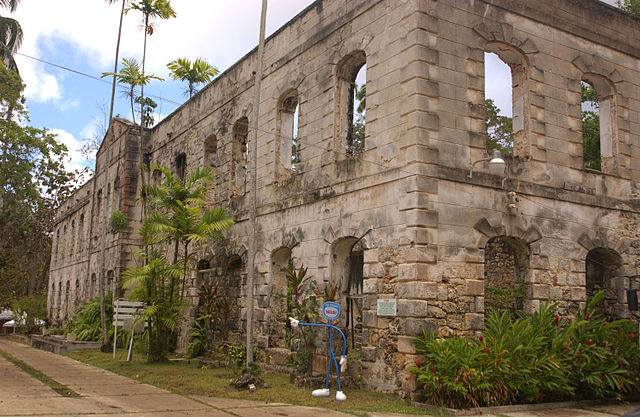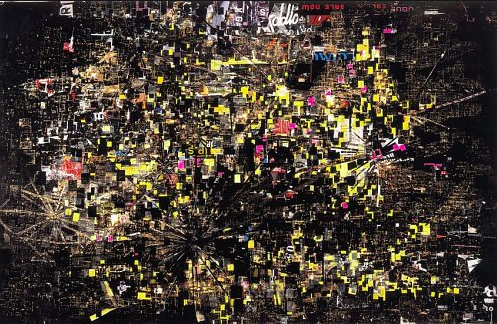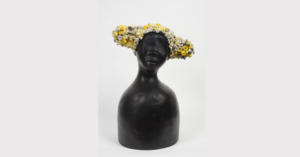
SIMONE LEIGH, “Untitled II (Anatomy of Architecture series),” 2016 (terra cotta, porcelain, vanadium, india ink, epoxy). | © Simone Leigh; Courtesy of the artist and Luhring Augustine, New York
“Something that is loved,
is never lost”
Toni Morrison, from the novel, Beloved
Toni Morrison remarks in an April 2015 interview in the U.S. edition of The Guardian newspaper:
“I’m writing for black people,” she says, “in the same way that Tolstoy was not writing for me, a 14-year-old coloured girl from Lorain, Ohio. I don’t have to apologize or consider myself limited because I don’t [write about white people] – which is not true; there are lots of white people in my books. The point is not having the white critic sit on your shoulder and approve it” – she refers to the writer James Baldwin talking about “a little white man deep inside of all of us.” Did she exorcise hers? “Well, I never really had it. I just never did.”
Morrison is describing a freedom utilized, an assuredness that her literary vision provides a reliable and protected space for people of color to share a testimonial. Art for the sake of art … for us. This philosophy is evidenced in all nine of her books, and certainly, in her latest, God Help the Child. Read it or remain unknowing.

Installation view, The Waiting Room, Simone Leigh, New Museum, New York, Photo: Roving Buffalo, 2016
Simone Leigh is another artist holding it down and setting it free.. depending on how she aims to employ the vital range of arts under her direction. Leigh’s work is refreshing to follow as she seamlessly flows from video, sculpture, installation, performance to social sculpture.

Detail, The Waiting Room, Simone Leigh, New Museum, New York, Photo: Roving Buffalo, 2016
The Waiting Room, which closed on Sunday, September 18, 2016, was a social sculpture/intervention located on the top floor of the New Museum in the Bowery district of New York. The artist divided the gallery space into areas where classes were offered in home economics, Taiko drumming, yoga, and Afro-Centering; which appears to have been a movement philosophy created by Aimee Meredith Cox which focused on mind-body body awareness exercises partially influenced by Katherine Dunham’s dance technique. Well, do the damn thing! There was a full roster of events and happenings culminating in a 100 Black Women Artists performance. Yes.

Black women artists dressed in red celebrate and testify during Simone Leigh’s Waiting Room. © Madeline Hunt 2016
The Waiting Room was inspired by the true story of the demise of a one Esmin Green. Here is an excerpt from the New Museum exhibition brochure describing the incident which generated inspiration for the exhibition.
“One June 18, 2008, the forty-nine-year-old woman was forcibly admitted to the psychiatric emergency department of Kings County Hospital Center, in Brooklyn, New York, due to “psychosis and agitation,” and subsequently waited for nearly twenty-four hours to receive treatment that never came. Instead, at 5:42 a.m. the following day, Green collapsed in her waiting room chair, falling to the floor- where she lay for more than an hour, unattended by employees who nevertheless stood by and looked on as she died.”
“… she could best be said to have died from waiting. Indeed, in the wake of her death, she was waiting still, for justice and, at the very least, for a truthful narrative.”
Hey, do your research, locate and read the entire exhibition brochure with the well-curated Public Programs schedule. The Programs took place over a four-month period at the Museum and extended the work into a real space in the here and now. Essentially The Waiting Room was to identify, investigate and provide a safe, supportive place for women of color to rejuvenate and reframe contemporary events and basically, exhale. By providing workshops, discussions, and medicinal herbs to soothe the soul, there was an intentional collaborative connection to the Black Lives Matter movement. Just what the doctor ordered to balance an intense work day or year.
What is the value of art in times such as these? Is it to flyaway into a white cube of commerce and construct a dream for Dreamers? Or can artworks perform to replenish Black self-love and nurture the soul for the next day? These sisters are doing it for themselves.
Five on the Black…
Ralph B. Johnson, received his Bachelor’s degree in architecture from Howard University, Washington, D.C., a Master’s degree in City Planning and a Master’s degree in Architecture, both from Yale University. While a student at Yale he was a founding member of the Yale Black Workshop an independent advocate program to provide design and planning services to the African American neighborhoods in New Haven, Connecticut. He later studied Architectural Preservation at the International Centre for the Study of Conservation and Restoration of Monuments (ICCROM) in Rome.
He was a founding Professor in the new FAU School of Architecture and the Director of the FAU Center for the Conservation of Architectural and Cultural Heritage (CCACH). He also served as the Director of the FAU Center for Urban Redevelopment and Education (CURE). He has conducted architectural and cultural heritage study tours in Spain and the UNESCO World Heritage Sites tour in Cuba.
Johnson served on the federal commission for the preservation of the Gullah Geechee (African American descendants of enslaved Africans on the Atlantic barrier sea islands) Cultural Heritage Corridor Commission. He is a member of the National Trust for Historic Preservation Board of Advisers and Trustee Emeritus of the Florida Trust for Historic Preservation.
1. Ralph, I understand you were active with the student protest movement while you were at Yale?
Yes, I was. It was during the so-called “Social Revolution” or the Civil Rights Movement of the 1960s. I was completing graduate degrees in City Planning and Architecture and a founding member of the Yale Black Workshop.
2. So, you were involved in the Black Workshop at Yale University, New Haven, Connecticut where a group of Black students demanded support from the University to set up a “workshop” in a black community. How did this come about? Can you provide more details as to the why, where, and when ?
In September 1968, during my second year at Yale, there was a mandate for the University to recruit more Black students to the School of Art and Architecture. I was the only Black student in the Master of City Planning program at the time. That year nine young Black men interested in social change were admitted to the University. It was not long before it was realized the assigned projects were irrelevant and did not adequately provide the opportunity for us to work within and on behalf of the surrounding Black communities in New Haven. One community was the Hill and deeply impacted by Urban Renewal with the potential displacement of its residents by Yale and the City of New Haven. We demanded to have an independent studio where we could become advocates for the community and work directly with its residents. We wanted, of course, to receive academic credit and be supplemented financially by the program. A storefront building became the site of the Black Workshop, and the community had a voice in their destiny, finally.
3. What is one of the highlights of this community collaboration?
There were several projects being proposed during that period of “urban flight.” The City of New Haven was being heralded as having one of the most progressive, civic and urban planning staffs in the country. The projects such as the proposed Ring Road around the city were being developed around the country to facilitate the movement of primarily white suburbanites in, out and around the city.
Another project came closer to revealing intentions of the University. The proposed Yale Medical Center garage including housing and retail over the proposed Oak Street Connector knew as the Richard C. Lee Highway after the mayor of the city The Oak Street Connector project required massive“urban removal” of the Black community near the campus. The Oak Street Connector was designed to bring suburbanites back to the city from the existing Interstate freeways. Parts of that project were subsequently shelved due partially to successful intervention of the community and the advocacy from the Black Workshop.
4. What might be the relevance of the Black Workshop today for architectural students of color ?
All of the projects and more that I mentioned having significant importance to the Architectural students of color today as these had for me when I was a student at Yale. Our respective communities need a voice to communicate with officials and professionals who hold their destiny in their hands. You can help them crystallize they needs and thoughts. I became an advocate, and until today I have always worked to ensure the community had a voice. My teaching career with students of Architecture was dedicated to involving them with a local real life community projects. The FAU Center for the Conservation of Architectural and Cultural Heritage that I directed was dedicated to the preservation of the Black community and its cultural heritage. They need us.
5. How is your retirement going?
I am enjoying retirement and looking forward to the creation of the Ralph Johnson Collection at the African American Research Library and Cultural Center in Fort Lauderdale. I am donating my personal collection to the Library. My hope is that anyone and especially students of color will visit the library and will be influenced by the books, papers, photos and other forms of documentation heralding my career in design, planning, historic preservation and, above all advocacy. This interview has brought back memories that I now can say truly influenced a long, rewarding career.
